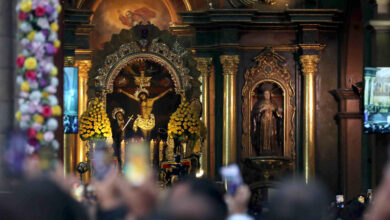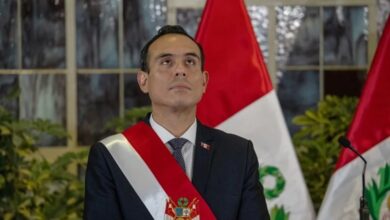Colombia Treasure Hunt Deepens As San José Coins Reveal Lima Origin

Six hundred meters below the Caribbean’s warm chop, Colombia’s most storied shipwreck has begun to talk. Ultra-sharp images reveal clusters of 1707 Lima gold cobs, tying the site irrevocably to the lost galleon San José and thrusting Bogotá into a duel of science, politics, and treasure fever.
Floodlights in perpetual midnight
Nothing on the surface hints at what waits down the continental slope southwest of Cartagena. Only the Colombian Navy’s research tender marks the spot, lowering a Lynx Saab Seaeye ROV that vanishes into blue-black nothingness. Six minutes later, the pilot’s monitors bloom with color: coral-flecked cannon, blue-and-white porcelain shards, and—most arresting—sun-yellow ovals lying like scattered cookies on silt. Those ovals are eight-escudo cobs, each hand-struck in Lima the year before the San José blew apart.
The new survey, detailed in Antiquity stitched 50,000 photographs into a model so she could read the assayer’s initial “H” on a coin the size of a bottle cap. “Before, we had beautiful but ghostly silhouettes,” lead author Pilar Jiménez says. “Now we have a ship you can walk around in virtual reality, down to millimeters.” Three neat piles of coins flank the stern as though sailors tried—futilely—to shift treasure before the powder magazine caught fire.
A Timeline Hammered in Gold
Colonial cobs are messy and irregular, but their messiness is a date stamp. Lima’s mint used distinctive dies: Jerusalem Cross on the front, Pillars of Hercules on the back, the pillars braced on cartoonish waves that no other mint bothered to engrave. Beneath the pillars sits the magic number 707. That puts minting in the fourth year of the War of Spanish Succession when Peru’s viceroy was under the Crown’s whip to clear years of unpaid royal taxes. Barrels of highland bullion were melted, stamped, and hustled north across the Andes.
By late 1707, those same barrels had been lashed in San José’s hold alongside Quito emeralds and cacao bound for Madrid’s sweet tooth. The convoy left Portobello in spring 1708. Off Barú Island, three British warships, hunting prizes to fund their war effort, pounced. Contemporary Spanish logs say Bodden Bar’s sky lit “as midday” when San José erupted. She sank with six hundred sailors and, legend claimed, enough gold to float a kingdom. She lay in silence for centuries—until now, when lumens from a robotic floodlight found her signature glitter intact.
Science Versus Siren Song of Fortune
Tabloid headlines scream a “billion-dollar jackpot,” but the archaeologists preach a far less romantic gospel: look, don’t touch—yet. At 600 m, the wreck sits in perpetual night, currents calm, oxygen low, and in a near-perfect vault. Lift a cannon wrong, and 300-year-old timbers crumble; displace sediment, and you may lose pollen traces that could map trade winds. For that reason, the team—half Colombian Navy, half civilian scholars—insists on finishing the full site map before retrieving so much as a spoon.
Their caution is also geopolitical. Citing UN conventions, Spain calls the wreck its “sovereign immune vessel.” Bolivia’s Indigenous Aymara groups remind anyone listening that the silver and much of the gold came from miners in Potosí who died by the tens of thousands—salvage companies, smelling profit, dangling high-tech submersibles, and percentage splits. President Gustavo Petro, whose administration inherited a stalled public tender, now faces a dilemma: prove Colombia can lift and conserve the cargo or watch commercial outfits turn a scientific trove into auction lots.
Meanwhile, the digital twin—free to explore on any classroom computer—ensures the coins’ original constellation is preserved even if waves or looters scatter them tomorrow. “We can run sediment-flow simulations, reconstruct the sinking sequence, all without breaching a single layer of mud,” Jiménez explains. The model has already exposed that several cannons lie upside-down, their touch-holes fused by heat, evidence the explosion began aft where powder sat closest to the captain’s cabin. History is rewriting itself, pixel by pixel.
Gold, Glory, And Cartagena’s Future
Colombia’s government sees an opportunity far bigger than bullion. Cartagena dreams of a world-class maritime museum where tourists could stand beneath San José’s recovered transom or stare into a tank where salt is teased from a single escudo. Economists at the University of the Andes estimate heritage tourism could net more in twenty years than a quick sale of coins ever would. Local schoolteacher Mariela Cortés agrees, telling EFE she wants her pupils “to hear empire’s story from the artifacts, not from a gavel at Sotheby’s.”
Yet members of Congress from landlocked departments see little upside in long, expensive conservation when roads at home are mud. They favor partnering with a private salvage firm that would bankroll recovery and split proceeds. The argument has colored committee hearings with phrases like “historical justice” and “neo-colonial plunder,” echoing debates over Elgin Marbles and Benin Bronzes. Petro has promised a “public, scientific” excavation, but each budget cycle tests that resolve.
Back on the seafloor, the ROV finishes a survey line and hovers. Its lights catch something new: a stack of Chinese blue-and-white plates, kiln marks dating them to Emperor Kangxi’s reign. They traveled from Jingdezhen kilns to Manila galleons, crossed the Pacific to Acapulco, trekked overland to Veracruz, and joined San José at Portobello—all before vanishing under Caribbean sand. In one frame, the global trade web of 1700 flickers back to life.
The Final Frontier of Colonial Memory
San José is more than a treasure; she is a time capsule of Spain’s first globalized century. Open her carefully, and she will tell why Andean miners, Chinese artisans, African sailors, and Andalusian gunners ended up aboard the same doomed wooden island. Rush and her timbers will dissolve, taking answers with them. Colombia stands at a crossroads: pioneer a 21st-century model of deep-water heritage science or slip into the well-trodden tale of quick riches and long regrets.
Also Read: Opposition Smells Slow-Motion Coup as Colombia’s Petro Bypasses Congress with Referendum
The gold stays where it glittered last for the moment—frozen in high-definition stills, safe beneath 600 m of pressure and pitch-black calm, whispering imperial secrets to any nation patient enough to listen.





